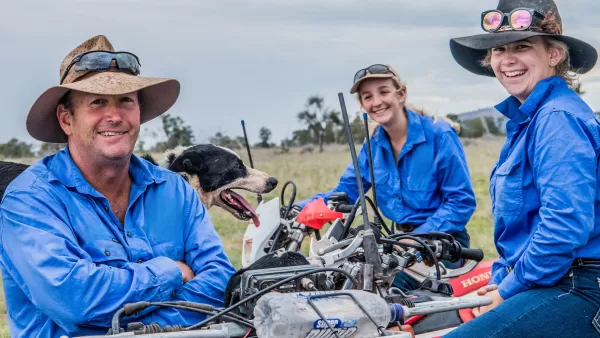Martyville Aquaculture Farm
Energy Savings: 25% | Cost Savings: $141,110 | Capital Cost: $1,130,000 | CO2 Savings: 443 | Project Status: proposed
Industry:
Aquaculture
Location:
Wet Tropics
Pump Type:
Submersible
Irrigation Type:
Not applicable
Technology:
Demand Management, Tariffs, Solar Power and Renewables
The main electricity consumption loads on-farm are:
- Ponds, with aerators that operate 24/7 and accounts for 78% of total energy demand.
- Pumping system, including 2 submersible river pumps operating in parallel, which recirculate water across the farm.
- Processing facility, with refrigeration systems that are used once per week during harvesting.
- Nursery, with aerators and pumps that operate 24/7.
- Feed shed and workshop, composed of refrigeration, evaporation, and lighting equipment.
The total annual energy consumption of the farm is around 2,200,000kWh at a cost of over $500,000. The farm also has 2 diesel generators to support the pond’s supply, which operate in an alarm auto-start and consume 500L of diesel every 8 hours.
To reduce energy consumption and costs onsite, audit recommendations included:
- A restructure of the current operating tariff.
- Improving pond aeration control (paddle wheel) using sensors.
- Installing a 60kW solar PV system in a combined supply configuration.
Table 1. Audit recommendations and savings.
| Recommendation | Estimated Cost to Implement ($) | Payback Period (years) | Energy Savings (kWh) | Cost Savings ($) | Emission Savings (tCO2-e) |
| Restructure of tariff | — | — | — | 11,637 | — |
| Sensors in pond aerator control | 722,000 | 9.1 | 443,225 | 78,940 | 355 |
| 60kW solar PV | 108,000 | 8.2 | 110,735 | 17,756 | 88 |
| Combined supply for solar PV | 300,000 | — | 31,805 | — | |
| Total | 1,130,000 | 8 | 553,960 | 141,110 | 443 |
The energy audit recommended installing real-time Dissolved Oxygen (DO) sensors to automatically control the paddle wheel operation and improve the pond aerator control system. The audit also recommended replacing the manual chemical test performed twice a day, reducing labour time and associated costs. The system provides real-time data every 4 minutes, including DO levels and water temperature, allowing the manager to identify reductions in DO levels throughout the day, avoiding stressing the fish, especially at night, thus improving fish production. The system also monitors current draws of the individual aerators, assisting in monitoring the biofouling of the paddles as well as the gearbox and motor conditions.
The optimisation of the Solar PV system recommended requires combining all electricities supplies to a single point, which implies installing a new distribution line across the farm to connect the current 5 supply points. Although this solution has associated capital and maintenance costs, it could save fixed metering charges, reduce energy unit rates, and bring additional tariff structure benefits. Since all power consumed onsite would be under the same tariff, it would be possible to reduce the night time loads by matching the energy consumption with solar generation.
Alternatively, the installation of small solar PV systems dispersed across multiple buildings was evaluated, with the advantage that they would be less affected by climatic conditions, given their distribution, and would have less potential for voltage fluctuations. However, implementing individual PV systems at each supply point requires more management with associated costs and time. See more information HERE.
At current production levels, a 25% decrease in energy consumption could be realised by installing all the recommendations in the audit, with 28% cost reductions and carbon emissions of 443 tCO2-e avoided per year.
An energy audit is a good investment
An energy audit is a great first step in moving a business towards a more efficient future by reducing energy use, costs and carbon emissions.
The Energy Savers Plus Extension Program was delivered by the Queensland Farmers Federation with support and funding from the Queensland Department of Energy and Public Works.

